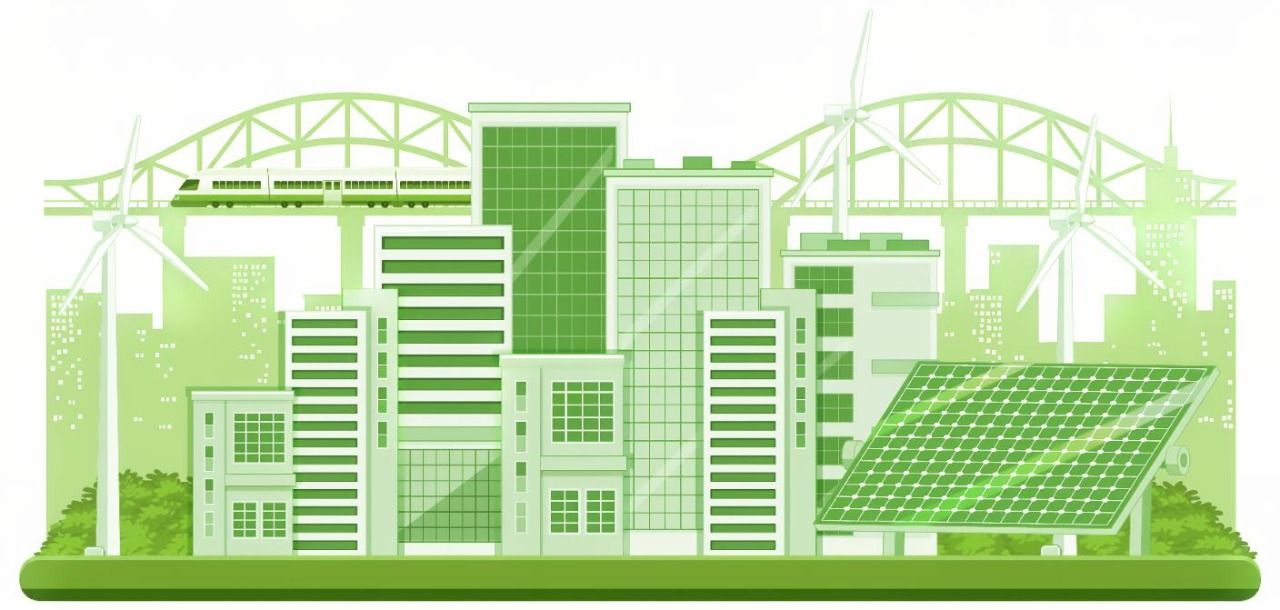Sustainability with Green Building Products: How Firstchoice Speciality Chemicals is Leading the Change

In the modern construction industry, sustainability has moved from being an option to becoming a necessity. With climate change, rising energy demands, and urban development shaping our future, building responsibly is the only way forward. For Firstchoice Speciality Chemicals, sustainability is not just about producing quality concrete solutions but also about providing innovative building chemicals that reduce environmental impact and extend the life of structures. Among these solutions, Elastocoat SR, CEMCOAT AR, and Silicocoat stand out as remarkable examples of how technology and environmental responsibility can come together.
What Makes Building Products Sustainable?
A sustainable building product is one that minimizes its impact on the environment while maximizing efficiency and durability. This means reducing emissions, conserving energy, lowering water usage, and ensuring long-lasting performance so that materials don’t have to be replaced frequently. Green building materials also focus on human well-being by being safe, non-toxic, and environmentally friendly during application and throughout their lifecycle. When such products are integrated into a project, the outcome isn’t just a durable building—it’s a healthier, energy-efficient, and environmentally responsible structure. That’s where Firstchoice Speciality Chemicals’ solutions play an essential role.
Elastocoat SR: Reflecting Heat, Preserving Energy
One of the most impactful innovations in sustainable construction is Elastocoat SR, a solar-reflective elastomeric coating developed to protect roofs and walls. Its advanced formulation reflects a large portion of the sun’s rays, significantly reducing heat absorption. This translates directly into cooler indoor spaces and much lower reliance on air conditioning systems. By reducing energy consumption, Elastocoat SR helps cut down on both electricity bills and carbon emissions. Beyond energy efficiency, it acts as a waterproof barrier, protecting buildings from rain, humidity, and chemical exposure. Being a water-based, VOC-free product, it is also safe to apply and does not harm the environment. Over time, its durability ensures that structures remain protected without the need for frequent maintenance, making it a truly sustainable choice.
CEMCOAT AR: Strength and Sustainability in One
Another cornerstone in Firstchoice’s product line is CEMCOAT AR, an acrylic polymer admixture that enhances the durability of cement-based materials. When blended with cement, it greatly improves water resistance, making concrete surfaces less vulnerable to seepage and moisture damage. This prevents structural weakening and extends the lifespan of buildings. The longer a structure lasts without requiring repair or replacement, the more sustainable it becomes. CEMCOAT AR supports that principle by making surfaces more resistant to abrasion, ensuring that they withstand daily wear and tear. Importantly, it is also non-toxic and safe for use in potable water structures, highlighting its environmentally responsible formulation.
Silicocoat: Guarding Against Moisture and Decay
If water is one of the biggest enemies of concrete, then Silicocoat is one of the strongest shields available. This silane-siloxane based water repellent penetrates deep into concrete and masonry, forming an invisible barrier that prevents water infiltration. The result is protection against cracks, corrosion, and structural decay—common issues in humid or coastal environments. Unlike many water repellents, Silicocoat does not block breathability. Moisture from inside the building can still escape, preventing mold growth and material degradation. The absence of solvents makes it safer for workers and the environment, further underlining its sustainable credentials.
Building Sustainability with Firstchoice Speciality Chemicals
At Firstchoice Speciality Chemicals, sustainability isn’t limited to one product. It’s a philosophy woven into the way we design, manufacture, and deliver solutions. By combining advanced concrete technologies with protective coatings and treatments like Elastocoat SR, CEMCOAT AR, and Silicocoat, we are helping the construction industry achieve lower energy consumption, longer structural life, and better environmental performance. What makes these solutions even more relevant is the bigger picture. Reflective coatings like Elastocoat SR not only reduce cooling costs for individual buildings but also help mitigate the urban heat island effect, where entire cities heat up due to excessive absorption of solar radiation. Water-repellent systems like Silicocoat protect infrastructure in coastal areas, reducing the need for costly repairs and replacements. And polymer-modified systems like CEMCOAT AR contribute to resource conservation by extending the life of concrete structures.
Overcoming Challenges in Green Building
Of course, adopting sustainable building products comes with its challenges. The initial cost may sometimes be higher compared to conventional materials, but the long-term savings in energy and maintenance often outweigh the upfront expense. There is also the need for skilled application, since even the best product underperforms if not used correctly. Firstchoice Speciality Chemicals addresses this by providing guidance and technical support to ensure that every product delivers on its promise.
Conclusion
The construction industry is evolving rapidly, and sustainability has become the driving force behind that change. Firstchoice Speciality Chemicals, through its advanced green building solutions, is ensuring that this change is both practical and impactful. Products like Elastocoat SR, CEMCOAT AR, and Silicocoat prove that durability, efficiency, and eco-friendliness can go hand in hand. By choosing these solutions, architects, engineers, and builders are not only ensuring stronger and longer-lasting structures but also making a commitment to the environment. In the end, sustainable buildings aren’t just about saving energy or reducing costs—they’re about building a future that generations to come can thrive in.